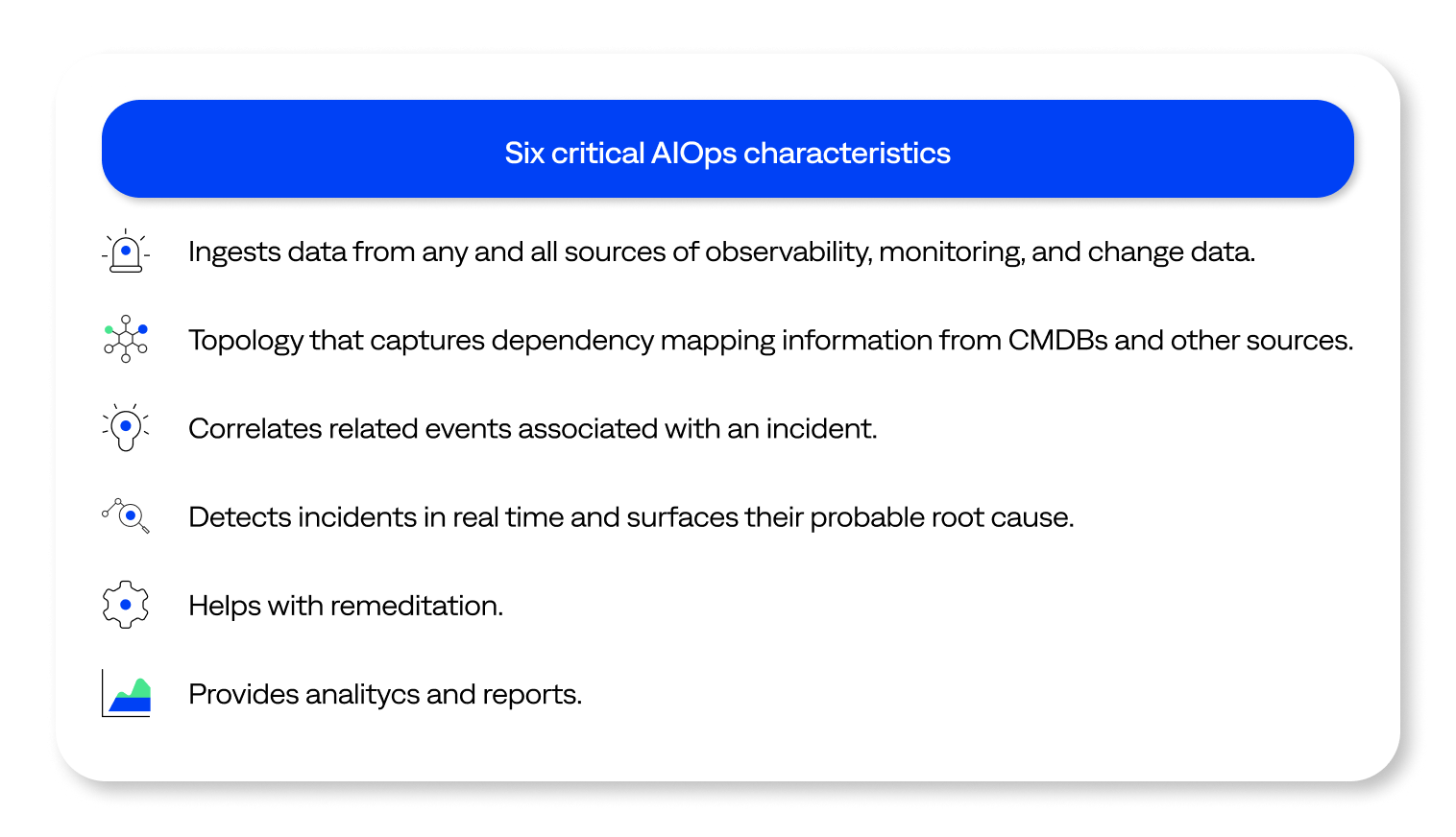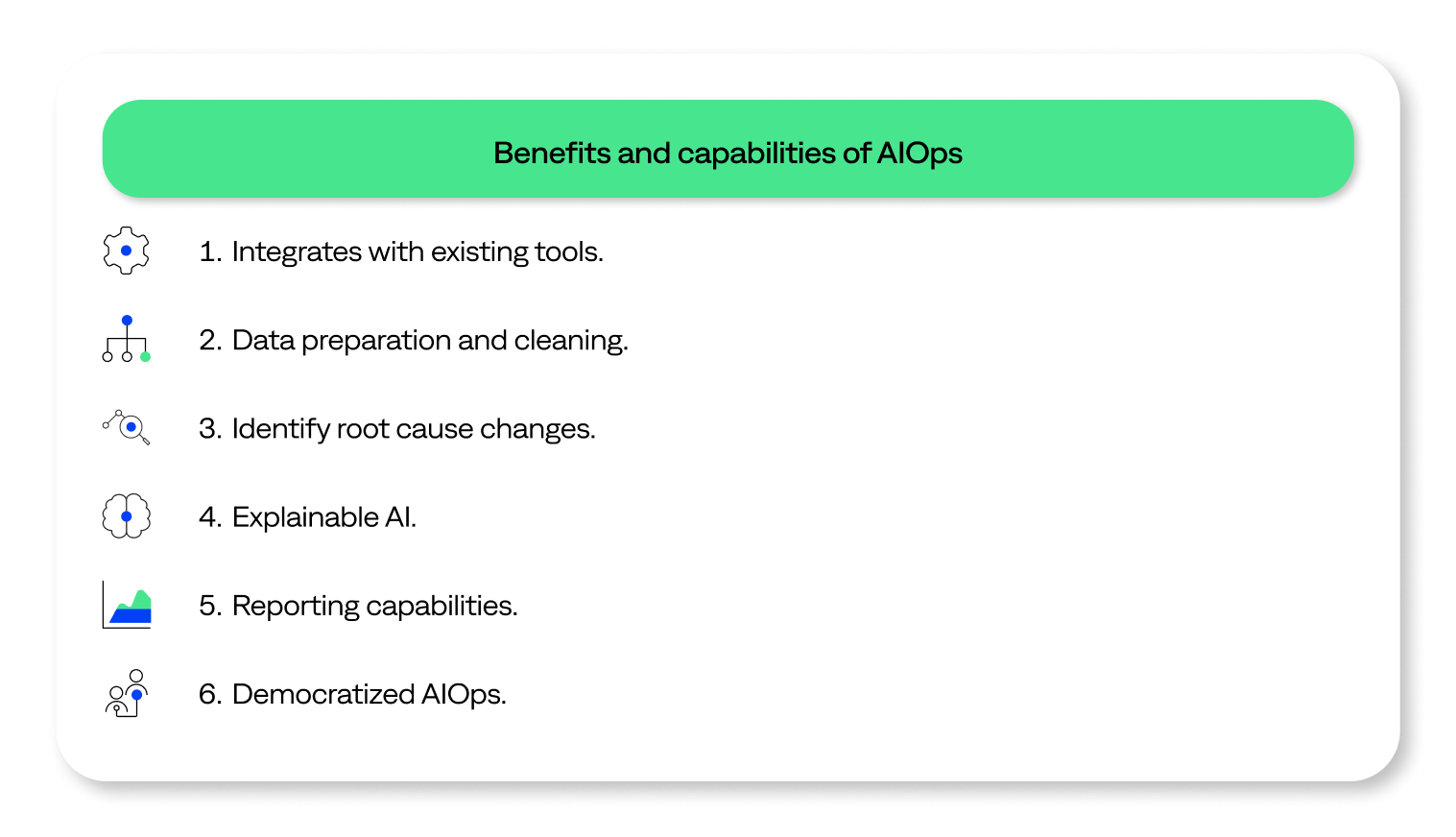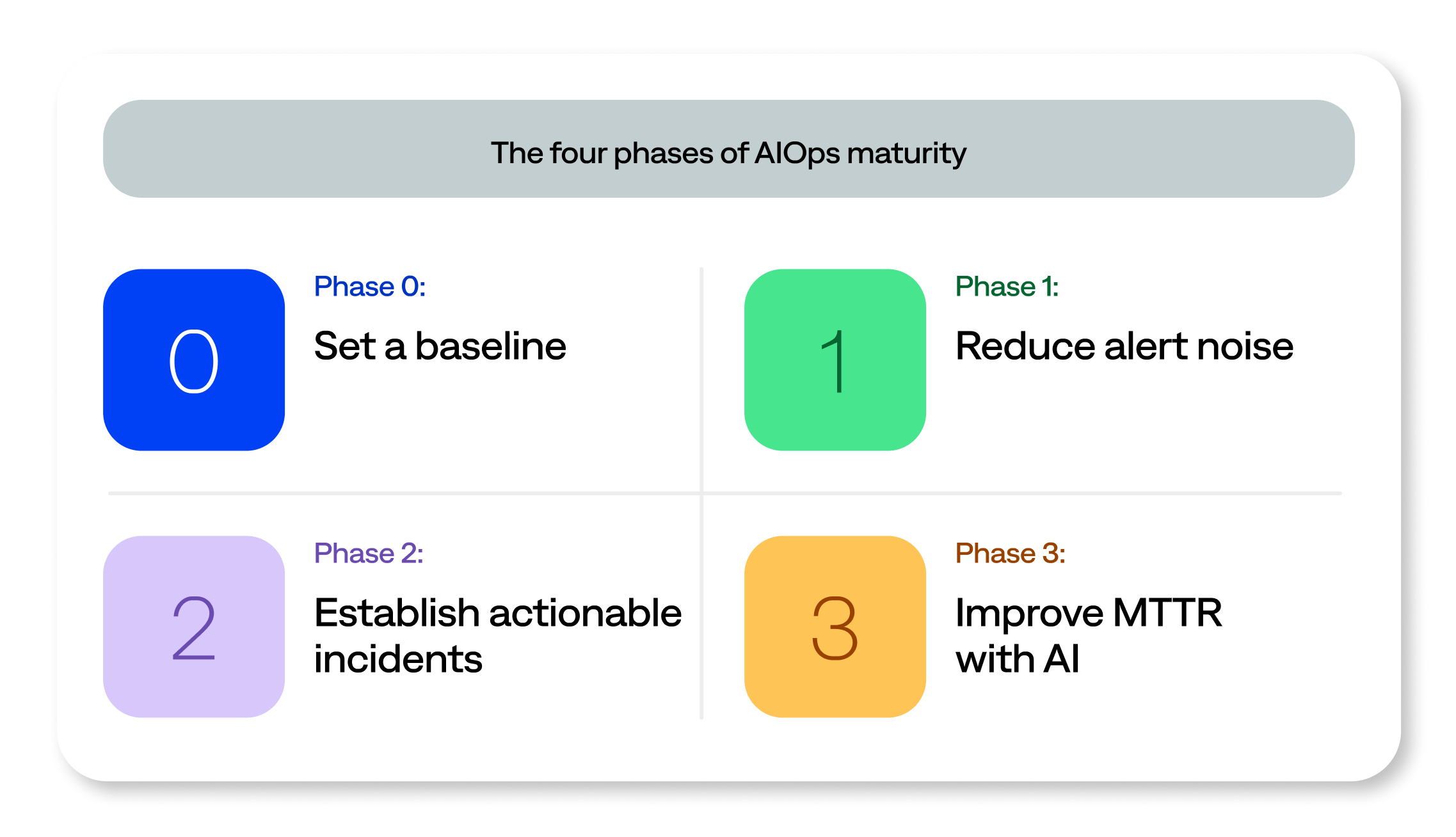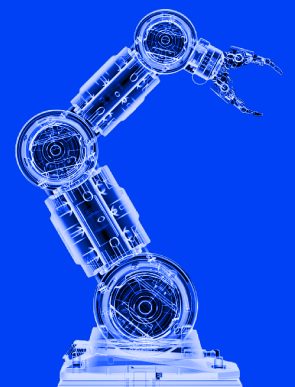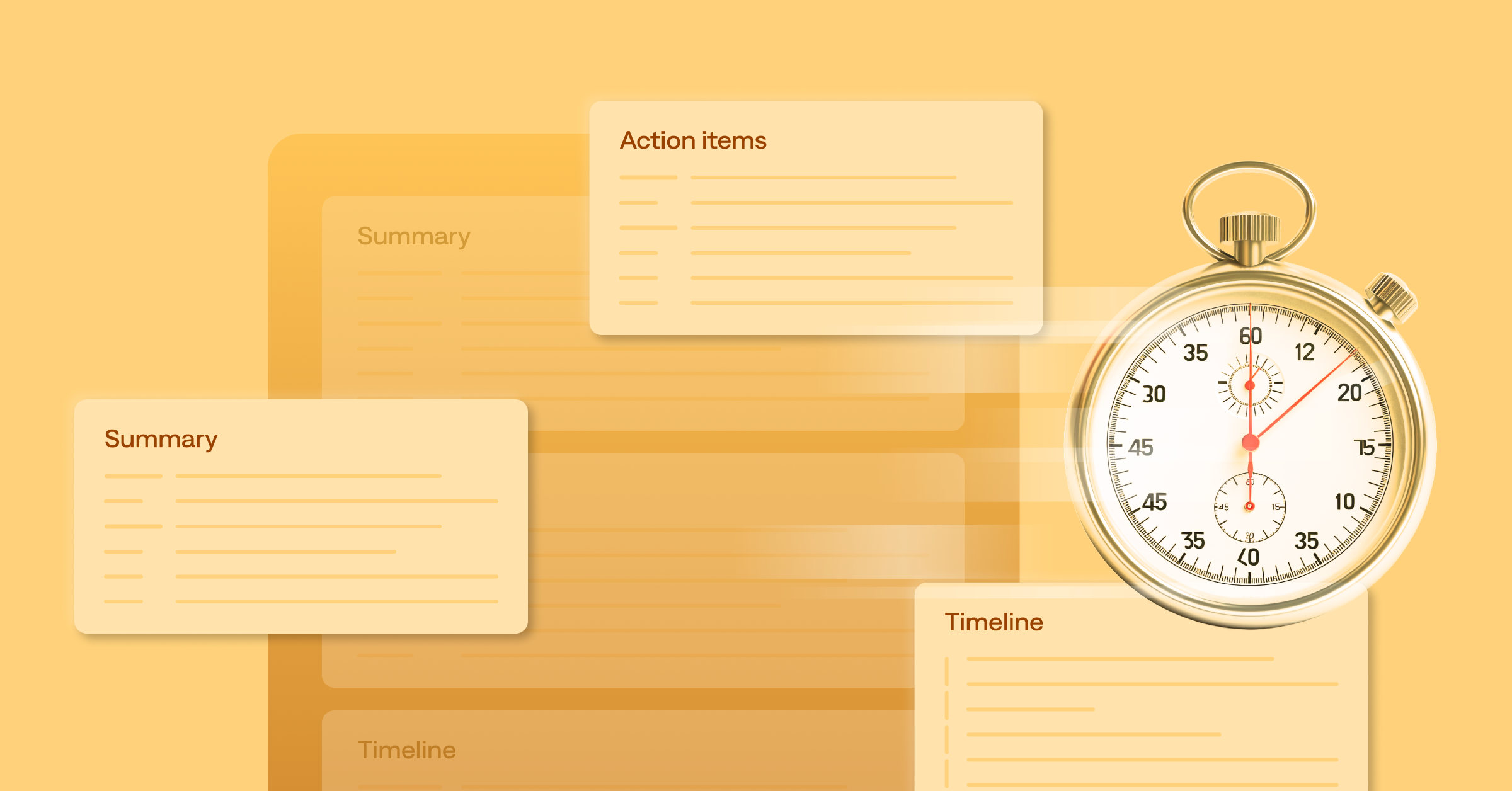1
ITOps vs. AIOps solutions
According to a recent survey by Enterprise Management Associates, IT outages can cost large enterprises more than $1.5 million per hour. AIOps offers a solution. With automated IT operations from a good AIOps platform, companies can cut outages by 30%. They can also reduce outage time to less than an hour.
What is AIOps? AIOps means artificial intelligence for IT operations. AIOps platforms are also known as event intelligence solutions (EISs). They use artificial intelligence (AI) and machine learning (ML) in IT operations. They help automate, simplify, and improve IT processes. These processes include event correlation, anomaly detection, and root-cause identification.
ITOps stands for information technology operations. It includes the processes, services, and people that an IT department manages. This helps ensure that an organization’s technical infrastructure runs smoothly. ITOps consists of the implementation, management, delivery, and support of IT services. ITOps encompasses multiple, but often siloed and fragmented, functions such as network management and technical support.
AIOps platforms use AI, big data analytics, and machine learning to improve efficiency. They automate routine tasks. This lets skilled teams focus on complex issues instead of manual work. AIOps tools improve visibility and data sharing among teams. This helps break down silos and eases the burden on senior specialists. In essence, AIOps brings intelligence, flexibility, and agility to ITOps.
2
Use AIOps tools to manage growing IT complexity
As IT environments become more complex and fast-moving, using generative AI in ITOps is now necessary. Data volume and service complexity continue to grow as technology evolves and customers demand more services. Data volumes are growing rapidly, making it challenging to improve while maintaining service availability. You risk missing critical alerts amid the sea of big data analytics and system alerts.
As your organization undergoes digital transformation to cloud and hybrid-cloud environments, AIOps helps support alert management, incident management, and service availability. AIOps platforms integrate various tools, teams, and data into actionable insights. They can also automate many slow and manual ITOps tasks.
These capabilities allow enterprises to scale their ITOps capabilities without increasing staff. AIOps helps businesses connect their data, workflows, and teams in real time. This removes blind spots and encourages teamwork. It also allows for quick incident resolution and smoother operations.
3
How does AIOps work?
AIOps uses advanced AI and ML to instantly correlate and analyze multisource IT data and automate and accelerate incident triage and investigation. AIOps solutions eliminate “noise” to identify and group data into suspicious events. Noise reduction facilitates anomaly detection, allowing IT teams to identify critical incidents before they escalate into outages. AIOps platforms can automate alert escalation and provide contextual insights into how to address them quickly, significantly reducing downtime and improving the customer experience.
AIOps performs event correlation, collecting and analyzing observability, topology, and change data. This incident intelligence helps teams find problems quickly. This lets them stop and fix outages before they happen. As a result, processes run smoother and there are fewer outages. Agentic ITOps, the next step in AIOps platforms, even helps IT teams with predictive analytics to help prevent incidents.
4
Characteristics of AIOps platforms
When evaluating AIOps solutions, consider the six critical characteristics of AIOps platforms.
Be sure your AIOps platform:
- Ingests data from all observability, monitoring, and change data sources
- Provides topology that captures dependency mapping from sources, including change-management databases (CMBDs)
- Correlates related events associated with an incident
- Detects incidents in real-time and surfaces the probable root cause
- Helps define and perform remediation activities
- Provides detailed analytics and reports for continuous improvement
AIOps platforms with these features can help ITOps, NOC, and SRE teams identify, investigate, and resolve issues. This helps prevent issues from growing into outages that affect end-users and customers.
5
Primary use cases for AIOps
Get the most from your efforts to use AIOps to optimize IT operations through AI-driven insights and automation. Some of the most popular AIOps use cases include:
AIOps enhances observability and monitoring tools
Enhancing the efficiency of ITOps, NOC, and SRE teams depends on gathering data from various monitoring tools. Alone, monitoring tools often produce overwhelming and unclear alerts. AIOps platforms enhance observability and monitoring tools by filtering out the noise, deduplicating, and normalizing the data they produce. AIOps further enhances the data’s value with operational context, often missing from the original alerts.
By combining refined data into a single alert, AIOps eliminates the need for multiple monitoring systems. This saves time and reduces tool overlap. AIOps can track both planned and unplanned system changes. It utilizes data from tools such as Continuous Integration/Continuous Delivery (CI/CD) and change management. These predictive analytics help find changes that could lead to IT disruptions.
AIOps enhances CMDBs with topology data
The complex links between nodes, servers, network devices, and applications make it hard for ITOps, NOC, and SRE teams. They struggle to distinguish related events and identify the root cause from symptoms alone.
AIOps platforms ingest topology data from various sources, including CMDBs, application performance monitoring (APM) tools, and virtualization platforms. Given that CMDBs are often out-of-date, it’s crucial for AIOps to access a broad range of data sources.
Once integrated, AIOps creates a detailed, up-to-date topology model. This proactive updating is vital to maintain accuracy. An outdated model can hinder the timely detection of incidents. For example, failing to notice a change in system configuration can turn a small problem into a significant service disruption. Imagine managing a hospitality organization and your booking system becomes inoperative during peak demand. Now imagine the significant setbacks, customer dissatisfaction, and potential revenue loss.
AIOps can correlate alerts from across the IT infrastructure
Event correlation becomes pivotal once you’ve gathered, cleaned, and aggregated ITOps data. A key part of the best AIOps platforms is event correlation. It uses AI and machine learning to analyze data. This helps find connections between alerts.
The modern IT stack creates overwhelming alert noise. The average enterprise uses more than 20 observability and monitoring data sources. When incidents occur, ITOps teams must manually comb through massive amounts of alerts. Many of these alerts are of low quality and difficult to act on. They do not provide operators with the necessary background. This makes it hard for them to understand what is happening. They also struggle to see why it matters and how to respond. You can find more information here.
AIOps can ingest alerts and events from various monitoring tools. These tools include those for infrastructure, network, applications, and cloud monitoring. This enables analysis across various areas. These automated IT operations platforms should also group and reduce duplicate alerts from monitoring tools. This will reduce time-consuming manual work.
Alert correlation is crucial for mitigating the overwhelming number of alerts generated by modern enterprise applications. This helps operators focus on what matters most. The BigPanda Event Enrichment Engine ingests alerts from multiple data sources, consolidating siloed observability, change, and topology data into a unified view. AI-powered event correlation removes duplicates, filters, normalizes, and processes alerts. This helps reduce noise and gives IT operations teams a clear view of your IT environment.
Reducing alert noise is a critical capability of AIOps solutions and plays a massive role in efficient incident response. BigPanda customers often cut alert noise by 80% within eight weeks. Many see a reduction of 90% or more over time. Gamma, a leading European supplier of communication services, adopted BigPanda and reduced alert noise by 93%.
“Within two weeks, we had a substantial reduction in alerts — and better alerts. An instant bang for the buck.” Dan Bartram, Head of Automation and Monitoring, Gamma
Advanced AIOps platforms further refine event correlation with business context. For example, AIOps might label an incident as business-critical. This occurs when it affects a significant number of customers or a critical service, such as payment processing. Helping ensure a positive customer experience.
Detect, triage, and assess the root cause of incidents in real time
Event correlation improves three critical stages of the incident lifecycle: detection, triage, and investigation.
- Event detection: ITOps, NOC, and SRE teams often learn about problems only when users or customers submit support tickets. AIOps platforms utilize event correlation to rapidly consolidate related system alerts into a single incident. This helps teams identify and resolve issues before they escalate into major outages. These outages can negatively impact users and the overall customer experience.
- Incident triage: AIOps platforms enrich incident information with business and operational context, thereby expediting the triage process. With enriched context and big data analytics, teams can quickly resolve the incident. They can also assign it for further investigation or send it to domain experts or L3 teams. Timely triage prevents unnecessary delays and speeds resolution.
- Root-cause analysis: AIOps platforms digest topology for infrastructure-related causes and change data for change-related causes. Equipped with this data, ITOps, NOC, and SRE teams can address most incidents directly and resolve them without escalation.
Remediate and resolve incidents automatically
When ITOps, NOC, and SRE teams are unable to resolve incidents automatically, they must perform manual fixes. This takes time away from other important tasks. Strong AIOps platforms integrate with diverse runbooks, as well as commercial and homegrown auto-remediation tools.
Cleaning noisy data and adding context enhances the quality of incident data, streamlining routing and resolution. When teams cannot fix an issue automatically, the AIOps platform should send the incident to collaboration tools. This includes ITSM, ticketing systems, or chat platforms. AIOps platforms must integrate seamlessly with these tools. This helps you bring in the right experts quickly, initiate advanced workflows, and expedite incident resolution.
Provide advanced analytics and reports
Practitioners, managers, and leaders need to understand the quality of their observability and monitoring data at different stages of the incident lifecycle. They also need insight into the tools generating the data, team productivity, and the efficiency of their incident management workflow.
AIOps platforms provide interactive ITOps dashboards, reports, metrics, and KPI measurements. AIOps platforms come with strong dashboards, reports, and KPIs. They also allow users to customize reports for different business units, application or service owners, locations, and other groups.
6
What are the capabilities and benefits of AIOps?
Be sure your AIOps platform delivers the following capabilities:
Integration with your current IT stack: Organizations rely on different tools for observability, monitoring, and more. These tools may represent years of investment and integration within ITOps processes. Ensure your AIOps platform integrates seamlessly with existing tools and offers APIs to avoid complicated deployment or tool updates.
Data preparation and normalization: Inconsistent formatting makes it challenging to obtain consistent data and extract valuable insights. AIOps can filter, remove duplicates, and standardize complex IT data as it comes in. It translates this data into a consistent format in real time.
Change analysis: Changes in your IT environment can lead to incidents. AIOps tools should be adept at ingesting change data. They need to link this data with observability alerts. They should also automate root-cause analysis to give context for incidents.
Explainable AI: Transparency fosters trust. Ensure that the logic of your AIOps solution is clear and editable. This transparency allows teams to understand, modify, and preview changes without needing specialists.
Reporting: In ITOps, strong AIOps tools help organize and show data. They can also connect with your favorite business intelligence platforms. This helps track and improve metrics. These analytics and dashboards help ITOps, NOC, and SRE managers communicate the value their teams create to critical stakeholders, supporting organizational transparency.
Democratized AIOps: Organizations are at different stages of modernization. They also have different IT infrastructures, from centralized ITOps to spread-out DevOps teams. Good AIOps platforms serve different users. They provide clear dashboards and reports. This helps everyone make informed decisions.
7
The four phases of AIOps maturity
Understand your maturity stage to assess the effectiveness of your AIOps and identify areas for enhancement. The four main AIOps stages include:
- Phase 0 — Set a baseline
- Phase 1 — Reduce alert noise
- Phase 2 — Establish actionable incidents
- Phase 3 — Improve mean time to resolution (MTTR) with AI
BigPanda has helped hundreds of organizations accelerate their AIOps maturity, regardless of their current stage. Our customers use AIOps from BigPanda to cut IT alert noise by over 95%. They can find issues before they turn into incidents with predictive analytics. They also automate incident-response workflows to keep service available at all times
8
Do you need to optimize monitoring and observability before deploying AIOps?
No. AIOps can enhance and fill gaps in monitoring efficacy using AI, ML, and automation. Trying to improve IT monitoring tools for real-time insights can result in an overwhelming number of tools. This happens to keep up with the changing tech landscape. Likewise, it can be challenging to discern the actionable information and real value of each tool.
“Don’t wait to start your AIOps journey once you are overwhelmed with alerts. Start early to get a single pane of glass to understand which monitoring tools you really need.”
– Sanjay Chandra, Vice President of Information Technology, Lucid Motors.
9
Why choose the BigPanda AIOps platform
As IT outage costs rise, it is important to find, prioritize, and fix problems quickly. This helps reduce the impact on your organization. AIOps from BigPanda makes every responder an expert by aggregating data across your IT stack into actionable incidents. With these insights, your responders can detect, triage, and prioritize incidents in seconds.
BigPanda enables you to maintain service reliability, accelerate incident resolution, maximize IT investments, and scale incident management. BigPanda is designed and built from the ground up for enterprise-scale, complex IT environments. Our platform can ingest alerts from any monitoring source and enrich them with topology data and valuable context. Effective event correlation enables ITOps teams to identify critical incidents in real-time.
BigPanda also ingests and correlates change data, allowing responders to quickly identify environmental changes that cause incidents. By automating key incident management steps, such as ticket creation and runbook automation, BigPanda helps accelerate incident investigation and remediation and reduce MTTR.
To learn more, check out our latest e-book: From firefighting to prevention: Transform IT incident management with AIOps.


